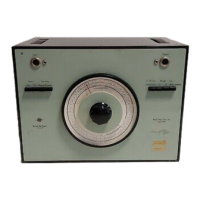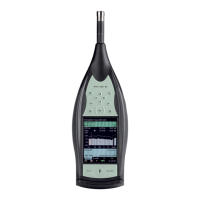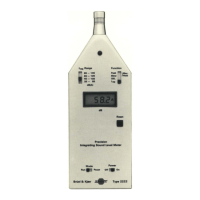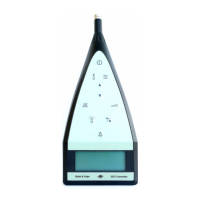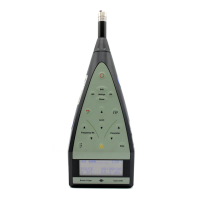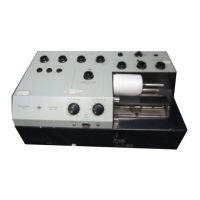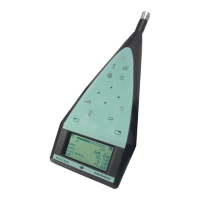4.
MEASUREMENTS USING THE INDOOR CLIMATE ANALYZER
4.1. INTRODUCTION
The Indoor Climate Analyzer enables measurement to be made
of
the environmental
factors to which
an
individual is exposed whilst working in moderate indoor environ-
ments. Guidance concerning the measurement
of
the various physical parameters is
given
below and additional information can also be found in ISO 7726 and ISO 7730
(Moderate Thermal Environments - Determination
of
the PMV and
PPD
indices and
specification
of
the conditions
for
thermal comfort). References and further details on
results reported here are contained in
BrOel
& Kjrer Technical Review, No. 1 -1985.
4.2.
AIR TEMPERATURE MEASUREMENTS
Air
temperature is the most common parameter used
to
describe thermal environments.
ISO 7726 requires that adequate precautions be taken in the measurement
of
air tem-
perature in order
to
reduce the influence
of
thermal radiation from surrounding surfaces.
The MM
0034
Air
Temperature Transducer is shielded from radiant heat and complies
with the requirements and recommendations
of
ISO 7726. Thus, extremely accurate mea-
surements
of
air temperature can be made using MM 0034 Transducers connected
to
the
Indoor Climate Analyzer Type 1213.
4.2.1. Use
of
the
Air
Temperature Transducer
To
ensure that the effects
of
radiant heat are minimized, the
operator
should make sure
that the sensor element
of
the
Air
Temperature Transducer is not directed towards any
known radiant heat source during measurements. Measurement accuracy
will also be
affected
if
the Transducer is hand held during the measurements.
4.2.2.
Vertical
Air
Temperature Difference Measurements
In
addition to the basic measurement
of
air temperature, the Indoor Climate Analyzer
can be used
to
measure the vertical air temperature difference. Vertical air temperature
gradients give rise
to
air movements and can result in local thermal discomfort. Thus,
larger vertical temperature gradients are likely
to
cause more dissatisfaction. The in-
crease in
% dissatisfied for increasing vertical temperature gradient is shown in Fig. 4.1.
ISO 7730 recommends that
for
a seated person the vertical air temperature difference
between
1,1
m and
0,1
m (i.e. head and ankle level) should be less than
3°C
(5,5°F).
Although
it
is possible
to
make these measurements, one after the other, using one
Transducer,
it
is more convenient
to
use two
Air
Temperature Transducers
to
obtain the
measurements simultaneously. A second
Air
Temperature Transducer MM 0034 can be
connected to the Analyzer via the Surface Temperature Transducer input socket on the
Rear Panel.
31
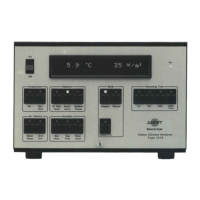
